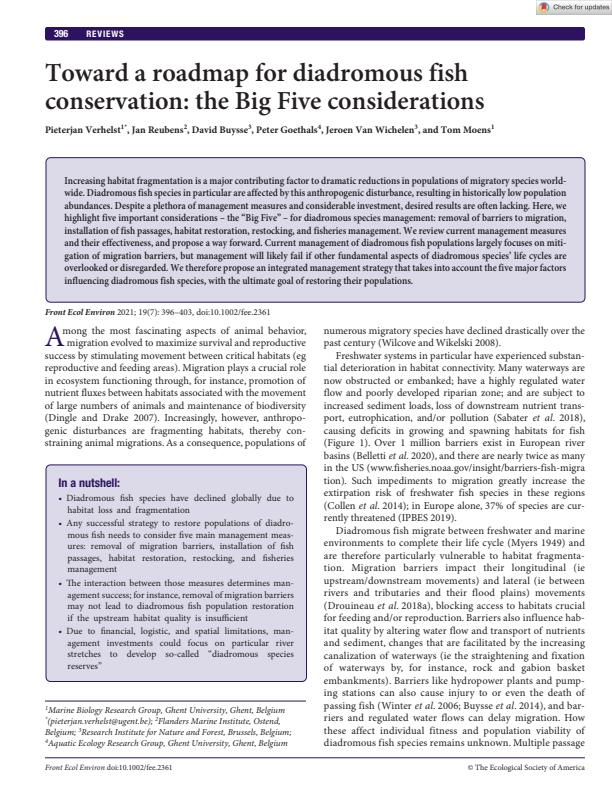Toward a roadmap for diadromous fish conservation: the Big Five considerations
Details
| Number of pages | 8 |
|---|---|
| Volume | 19 |
| Magazine issue | 7 |
| Pages (to-from) | 396-403 |
| Type | A1: Web of Science-article |
| Category | Research |
| Magazine | Frontiers in Ecology and the Environment |
| Issns | 1540-9295 |
| Language | English |
Bibtex
@misc{3f27d195-56bc-448e-80ea-30a8c6f2c27e,
title = "Toward a roadmap for diadromous fish conservation: the Big Five considerations",
abstract = "Increasing habitat fragmentation is a major contributing factor to dramatic reductions in populations of migratory species worldwide. Diadromous fish species in particular are affected by this anthropogenic disturbance, resulting in historically low population abundances. Despite a plethora of management measures and considerable investment, desired results are often lacking. Here, we highlight five important considerations - the {"}Big Five{"} - for diadromous species management: removal of barriers to migration, installation of fish passages, habitat restoration, restocking, and fisheries management. We review current management measures and their effectiveness, and propose a way forward. Current management of diadromous fish populations largely focuses on mitigation of migration barriers, but management will likely fail if other fundamental aspects of diadromous species' life cycles are overlooked or disregarded. We therefore propose an integrated management strategy that takes into account the five major factors influencing diadromous fish species, with the ultimate goal of restoring their populations.",
author = "Pieterjan Verhelst and J. Reubens and David Buysse and P Goethals and Jeroen Van Wichelen and T. Moens",
year = "2021",
month = sep,
day = "01",
doi = "https://doi.org/10.1002/fee.2361",
language = "English",
publisher = "Instituut voor Natuur- en Bosonderzoek",
address = "Belgium,
type = "Other"
}

